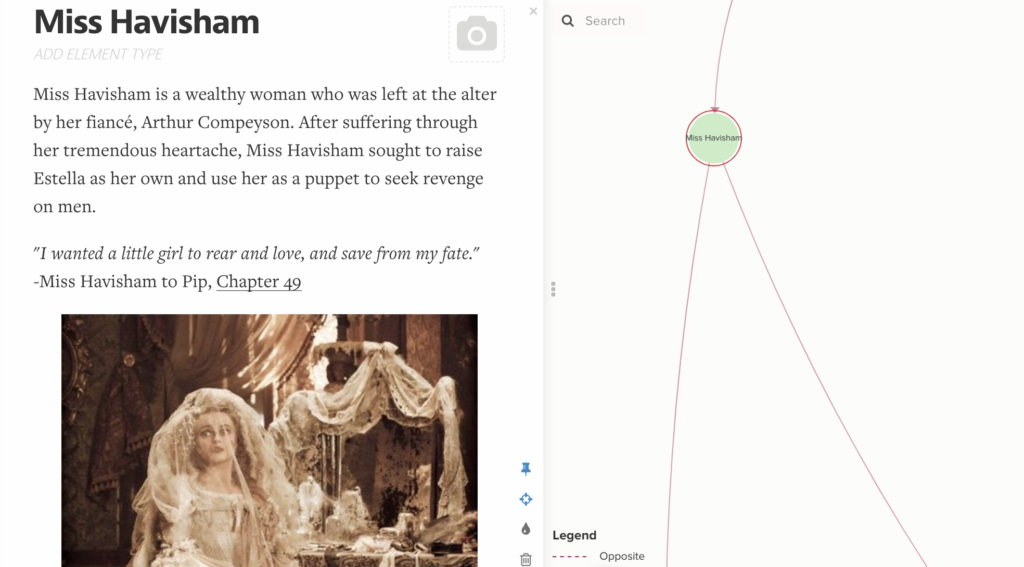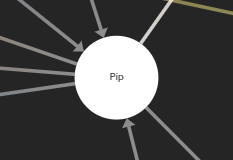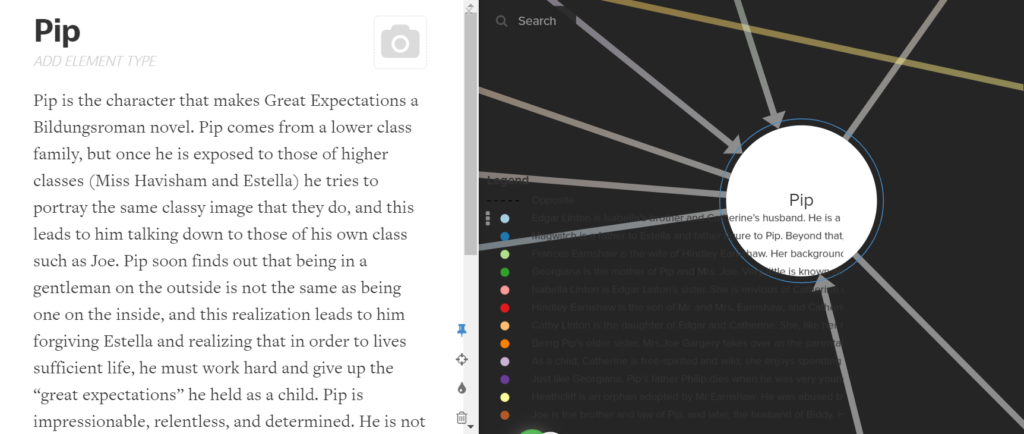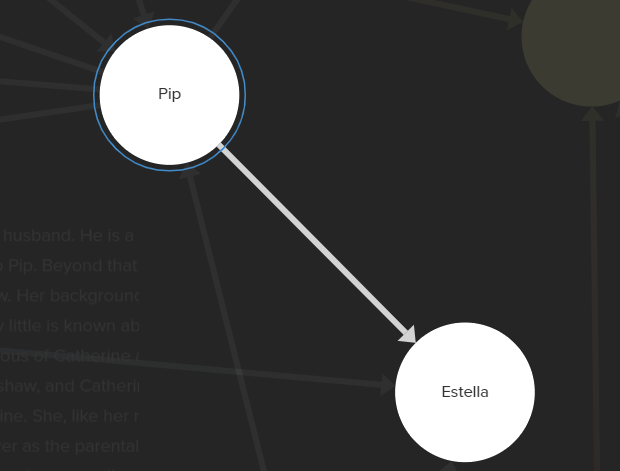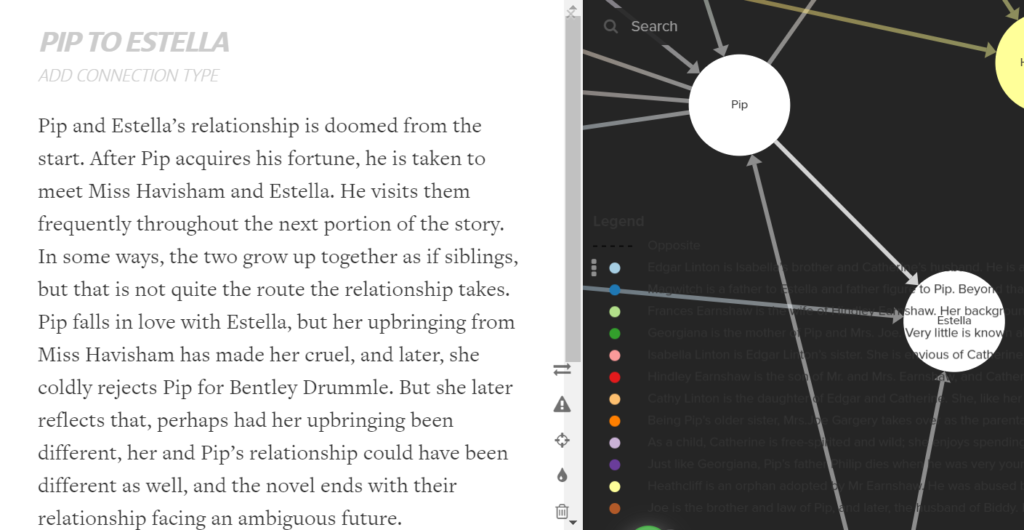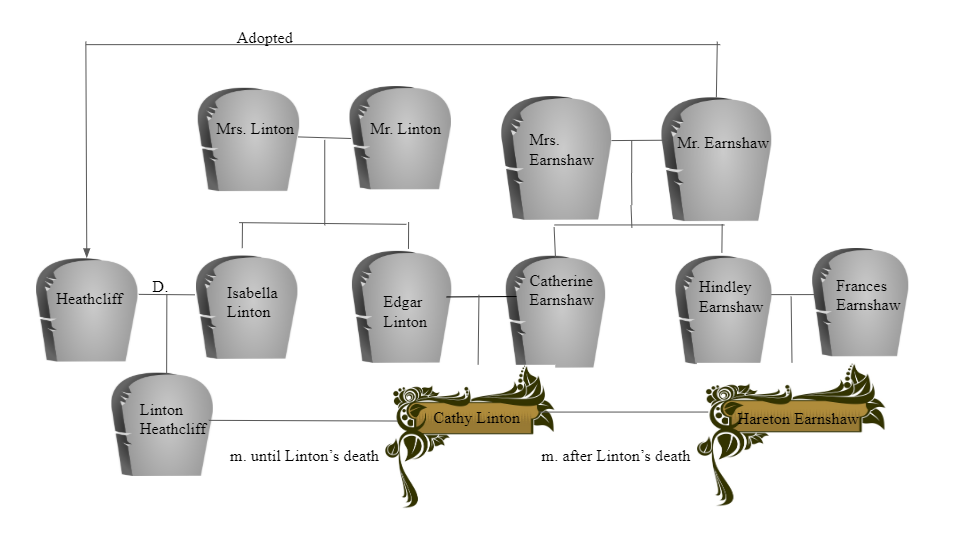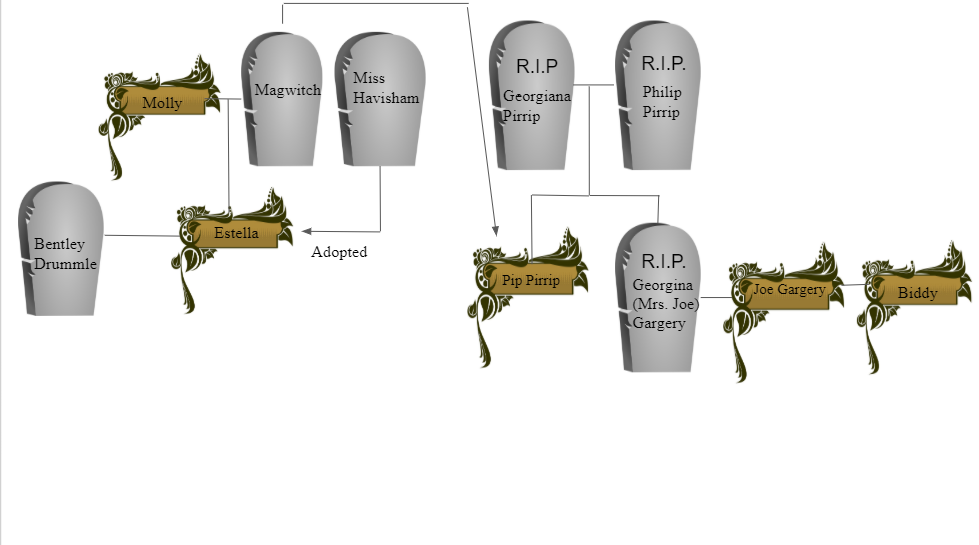This project was inspired by, and further unearthed certain connections between, the chronology of Emily Bronte’s Wuthering Heights and Charles Dickens’ Great Expectations. Both novels feature chronology as a storytelling element in a distinct way that remains important to their narratives beyond a simple linear accounting.
These two novels and their chronology are not connected by a shared feature. Rather, they are linked by the tension that results from their contrasting depictions of time. This connection through tension is worth considering as the comparison between the two disparate representations of the passage of time can give readers of both texts the choice to decide which novel’s rendition they feel is more authentic. In addition, it indicates how the usage of time, which every story must feature, can fundamentally change how the story is perceived by its audience.
Indeed, the chronologies constructed by Bronte and Dickens could not be more different. In Bronte’s novel, time occurs in a cyclic manner; the novel’s characters are doomed to repeat the mistakes and experience the very same hardships of their predecessors. For example, Heathcliff is determined to make his wreck vengeance upon his tormentor, Hindley, by making Hindley’s son, Hareton, just as rough and coarse as Hindley made Heathcliff. Thus, Hareton grows to be exactly like Heathcliff and even falls in love with Catherine II, a woman who more or less tortures him by teasing him and chastising him. In doing so, he falls into the same cycle of romances that Heathcliff did with Catherine I, the mother of Hareton’s love. Catherine made Heathcliff miserable by choosing to wed another, Edgar Linton, through Heathcliff certainly contributed to the pair’s “romance” through his harsh attitude and intense and violent disposition. Furthermore, the characters are trapped in certain places and scenarios; they move cyclically from Wuthering Heights to Thrushcross Grange, but as the gaze of the novel never leaves these locations, the actions of the characters appear to definitively tied to them. The characters are left figuratively and literally orphaned and left without guidance.
On the other hand, Dickens’ representation of the passing of time and its effect upon his novel’s characters is of a far more linear fashion. Pip grows from a young boy to a grown man, and along the way, he learns valuable life lessons that spur and signal his internal growth from insecurity to stability. At the outset of Great Expectations, Pip is ashamed by his family, his coarseness, his lack of education, and his place in society: a member of the lower, allegedly unrefined class. This linear trajectory of Pip’s rise in social standing, fortune, and gentlemanly training, is ultimately undermined and reversed when he stumbles into massive debt and discovers the true source of his expectations. However, it is as a result of these supposed setbacks that Pip truly grows. He realizes that wealth and status are not the ingredients that create a happy individual, as these aspects encouraged Pip to neglect his family who always loved and cared for him. By the end of Great Expectations, Pip is self-assured and content with the life he has, for he knows he is loved by his family and friends. He has grown and matured as an individual in a way that the characters of Wuthering Heights could not.
To illustrate the chronologies of both novels, we constructed two timelines using the online source tool, Timeline JS. In order to create these timelines, we first needed to locate the dates or potential dates when each novel’s primary events occur. We selected events that were particularly critical to the connection we were attempting to make. So, for Wuthering Heights, we sought out instances that affirmed the cycles we perceived within the novel’s narrative. For Great Expectations, we attempted to trace the events that marked Pip’s personal growth, but maintained the illusion of monetary or societal “progress” by refraining from analyzing the events of the novel as indicative of Pip’s internal, spiritual maturation. Moreover, finding the dates for Wuthering Heights was not especially difficult, as Professor Schacht kindly shared with us a very helpful source, A. Stuart Daley’s “A Chronology of Wuthering Heights,” that provided for the confirmed or theorized dates and times that we used in our timeline. Finding the dates for Great Expectations was a more difficult process, but eventually we used the confirmed and theorized dates from Jerome Meckier’s “Dating the Action in Great Expectations: A New Chronology.” We then entered these all of our compiled dates into the respective timelines. Upon locating and entering the dates of all the events we wished to present, we entered in titles and descriptions that both labeled and explained the event to which they belonged. Once this step was completed, we set to work finding copyright-free images that illustrated the events within our timelines. Lastly, a small piece of writing that effectively explains the link between the two timelines was written such that individuals engaging with the project might better understand our motivations.
Throughout the course of working on the project, we faced many challenges. The first challenge we encountered was how exactly we were going to illustrate the cyclical nature of time in Wuthering Heights with Timeline JS, a tool that, at first glance, seems only able to express linearity since it moves laterally from date to date and cannot readily display circularity. To circumvent this issue, one group member discovered that the backgrounds of the particular event slides could be programmed to appear as different colors when the timeline is presented. Upon making this discovery, we set to work color coding all the different cycles we believe to be at work within the novel. We find that this solution really works, as Timeline JS even has a feature that appears at the bottom of the timeline that demonstrates when each of the cycles appears across the play’s chronology. Thus, we were able to use Timeline JS and express the cyclical nature of time in Wuthering Heights. Another challenge we faced was finding a source that presented confirmed or theorized dates for Great Expectations. While Dickens’ novel does at times mention months or days of the week, years are noticeably absent from his work. Thus, we could not rely on the novel alone for dates. Rather, we had to do significant research in order to find a source that did espouse theories regarding the dates in which the events of the novel occur. Most experts seemed to concur that the events of the novel occurred before 1860, when Dickens began releasing the novel, and 1800, roughly the beginning of the industrial revolution, As that is a sixty-year period, we had to somewhat narrow the time frame. We ended up finding only one article that seemed to accomplish the aforementioned task, but it was absent from our school’s library. So, we ended up having to create a free JSTOR account in order to access it. Lastly, we encountered the challenge of how we were going to simultaneously present our two timelines. We initially thought of making a website, though this seemed like an inaccessible option, as the site would likely see little traffic. So, Professor Schacht offered that we should post the two timelines and our corresponding linking text on the course blog, thereby ensuring that our project will be interacted with and enjoyed.
Furthermore, we hope that individuals who interact with our project will be able to deduce our intended use from it. The intended usage of these timelines is a comparative approach to the novels’ respective chronologies, and demonstrates how these disparate chronologies can lead one to draw contrasting conclusions regarding human nature and the overall experience of life. By interacting with the Wuthering Heights timeline and witnessing the cycles we located, labeled, and color-coded, we hope that our audience will notice the circularity of Wuthering Heights’s narrative, and conclude that the novel’s characters were never really able to break free from the clutches of these cruel, unrelenting cycles. We also hope that in our Great Expectations timelines, one will notice that, despite his rise and fall from high society, Pip truly experiences positive linear growth, even if it is an internal and spiritual journey. He recognizes that riches truly come from within, and from the love others can provide, not from grandstanding and competition with one’s peers. Moreover, it is our intention that those who engage with our project will take it upon themselves to compare the two chronologies and ponder which one they believe is more applicable or accurate to their own life experiences. We hope that individuals using these timelines can then will spark conversation or debate regarding the nature of life. Are we humans really just trapped in a never-ending cycle, doomed to repeat our own and our predecessors’ mistakes? Or do we bear the potential for true, internal growth, wherein we can recognize and learn from our past mistakes in order to recognize that which is truly valuable? To what extent do people disagree with the conclusions we’ve formed? Perhaps someone has found that Bronte and Dickens created their stories with a completely different thematic purpose in mind. We hope that individuals will read not only our interpretation of the two timeline, but will also draw their own conclusions and perhaps contest our group’s views.
Lastly, we would like to provide our audience with instructions on how to engage with and navigate the two timelines that we have constructed. In order to use our timelines, one simply has to scroll through the timeline’s events by clicking on the forward arrow on the slides’ right side. To go back, then, one can click on the backwards arrow on the slides’ left side. It is quite simple. For the Wuthering Heights timeline, in particular, one can exclusively investigate the different cycles embedded within the novel’s narrative by clicking through the events that are housed within the cycle of “Character Parallels,” for example. One would then only see events that signal the reoccurrence of certain characters or character tropes and would therefore only see events like “Birth of Catherine I” and “Birth of Catherine II.” Timeline JS is relatively easy to use and produces wonderfully clear timelines. We hope that you enjoy!
Wuthering Heights timeline (as seen above)
Great Expectations timeline (as pictured above)
Credits:
Hannah Bentivegna: Auxiliary Aid and Timeline Editor
David Beyea: Timeline and Writeup Editor
Anonymous: Timeline Documentor of Wuthering Heights
Claire Corbeaux: Timeline Documentor of Great Expectations
Ravenna VanOstrand: Timeline Editor, Organizer, and “Tech-Wizard”
Works Cited:
Chapman & Hall. Title page of first edition of “Great Expectations” by Charles Dickens. 1861. Heritage Auction Galleries. https://commons.wikimedia.org/wiki/File:Greatexpectations_vol1.jpg?fbclid=IwAR3ub6b-U0FVxxOkQVHHsDyuTPJdo2nJMxiA2FttqxSJf_ZYwn9J0XFz4YQ.
Daley, A. Stuart. “A Revised Chronology of Wuthering Heights.” Brontë Society Transactions, vol. 21, 1995, pp. 169-173. Taylor & Frances Online, https://proxy.geneseo.edu:6540/doi/abs/10.1179/030977695796439141
Lowell 1238.5 (A), Houghton Library, Harvard University
Meckier, Jerome. “Dating The Action In ‘Great Expectations’: A New Chronology.” Dickens Studies Annual, vol. 21, 1992, pp. 157–194. JSTOR, www.jstor.org/stable/44364568.
